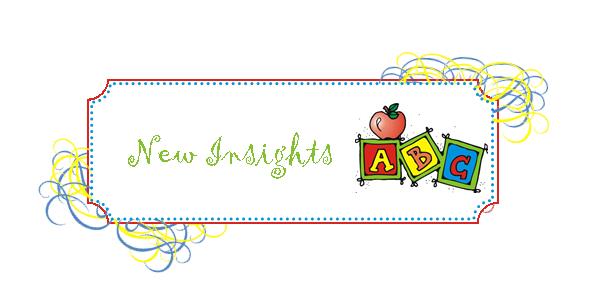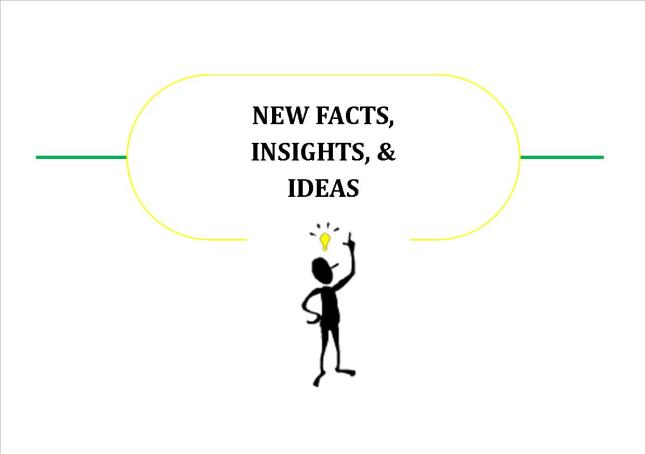In a blink of an eye, eight weeks flew by. I can hardly believe that this research course is nearly complete. I have to admit, when I first looked at the syllabus and assignments, I didn’t think I’d ever be able to do this. Just seeing some of the descriptions and terminology, I highly anticipated significant challenges. I started the course with apprehension and hesitancy that slowly melted away with each passing week. I began to understand the world of research and opened my eyes to its presence around me. Below you will find the numerous new insights, changed ideas, lessons learned, overcome challenges, and modified perceptions that I was able to grasp along this journey, which has transformed me into a critical consumer of research.

These are just some of the insights I’ve gained about research:
- Research is embedded within the world around us. I never realized how much research is around us until I began to understand it. With each new concept, I was able to discover it within my every day environment. Finding research in the world has allowed me to see a new perspective of the scientific word.
- Research is complex and intricate. As I experienced the concepts and terminology associated with research, I was able to see how in-depth the process is. Each element must be thoroughly understood in order for it to be effective, and there are several components within each element! Complex and intricate indeed!
- Research is time-consuming. Correlating with the preceding insight, research takes time. Since the process is so in-depth and complex, it requires a lot of time and effort. It is not a task that can be just thrown together, but rather it needs a significant amount of time and dedication in order to be an effective contribution.
- Research is valuable and offers contributions. The more I learned about research, the more I was able to see how much it has to offer to the field of early childhood education. Due to research, many early learning and development opportunities have been enhanced.
In addition to the new insights I gained, my ideas about the nature of research shifted in the following ways:
- If you’re trained, then you can do research. Prior to this course. I saw research as a prestigious activity. I assumed that only a few people could effectively conduct research. I surely did not consider myself one of them. However, that idea has now shifted to encompass a much larger circle. If a person understands and properly knows, then he/she can complete a project. It doesn’t have to be a specific person; research just needs qualified, trained researchers.
- Research is not so complicated. Initially I believed that the nature of research was tremendously complicated and too advanced for my brain to comprehend. Yet, something happened as I dived into the realm of research …. I actually began to understand it! My original idea slowly evolved to the point that I realized that if research is thoroughly understood, it really isn’t that complicated at all.
- Research is a combination of many aspects. Originally I considered research to be just that – research. I didn’t see any differences within the process or any distinct components. I merely believed that a research study evaluates, tests, and analyses an issue or problem. However, now I can clearly see that there are numerous components just in the research design that must be evaluated before even including it in a study. Some of these components include type of design, sampling process method, data collection method, and type of analysis. Pieces of these elements are then pulled and combined with others into a research study. Due to this combination effort, research is not just research. Rather, it is a process that relieves on many different components, which helps make each project individualized and unique.
There were also many lessons I learned about planning, designing, and conducting research in early childhood. Some of them are as follows:
- Each element of design needs to be thoroughly understood prior to inclusion in a research project. The best way I can demonstrate this lesson is through my own personal experience: When I started to design my research simulation, I opted for a few elements that I semi-understood and thought they would be the best fit. However, as I further explored these elements and really grasped their meanings, I could see that they wouldn’t be the best fit for my project. Therefore, I learned that a researcher must know each element completely to determine which ones correlate to the study.
- What’s the rush? A researcher in any field, especially early childhood, needs to plan for an adequate amount of time. Research of any kind requires time and dedication; without this, the entire process could be jeopardized. Research involving children may require additional time due to the young (and seemingly unpredictable) participants. The use of a timeline would be helpful to utilized for research to stay on track, ensuring that each phase receives the proper amount of time and attention.
- Flexibility is your middle name. Ok, let’s be honest. You have the perfect research simulation outline with a strict time frame for each section. You go smoothly through each phase, completing it within the given time frame, with a few minutes to spare. The next step is to interview the children to get their personal perspective on the issue. You have one day to complete this assignment. You arrive to the setting to find that three of your participants are sick with the flu and two just don’t feel like talking. Looking at your timeline, you suddenly realize that there is no room for this unpredicted situation …. Flexibility should be your middle name when conducting research with children. Young participants have unpredictable patterns, and a research project needs to be understanding of this fact. During the design process, it is crucial to build in flexibility to ensure that all of your data can be collected within a timely matter that is acceptable for both you and the participants. Without flexibility, the researcher will only be frustrated and frazzled at the end of the day.
- Know children and their developmental changes. When completing research with children, I learned that it is significant to have a knowledge baseline about child development when conducting a project. It is even more important to have a deep understanding about the topic at hand. While this is usually undertaken during the literature review, I learned that it is important to have this prior to any research. This will serve as a solid foundation to stand up when conducting research in early childhood education, which will only add to the quality and effectiveness of the entire process.
Of course, within any graduate course, there will be challenges and obstacles to overcome. Keep reading on to discover what I encountered and some of the creative ways that I used to meet these challenges head-on.
- Sometimes I just didn’t have a clue. No, honest, I would read through a chapter one week, and there would be sections that seemed like a foreign language. I would just stare at the words all running together. How would I ever understand these concepts and actually apply them to my project? While this challenge was dueling, I was still able to overcome. Whenever I came across a term or concept that seemed foreign, I would re-read the section over and over until I began to formulate a picture of what it meant. Then, I would write down notes, and yes even draw pictures to capture the meaning. Then I would try to relate it to my personal life to draw connections. All of these steps allowed me to effectively understand the majority of the terms and ideas presented in the past eight weeks.
- What design should I go with? Do you remember completing the worksheets that had us experiment with qualitative and quantitative research? After each of these assignments, I was even more confused as to which one would be best for my topic. I could see how my question could fit into either one, achieving the goals I intended. Furthermore, I was concerned that I would pick one, and it would be the wrong one. I was befuddled. What would I do? This challenge was very real until last week when we read about mixed methods. After I explored this chapter, I was quickly comforted. An easy solution to this obstacle was imminently clear: I could use pieces of both qualitative and quantitative methods. A perfect fit to my project. Challenge overcome!
- Inundated information within the core design. Well, once I narrowed down my topic and settled on a research design, I wanted to include almost every component from both qualitative and quantitative research. As I began to piece it all together, I quickly realized that I actually had too much in my design. If this was a real research study, it would be very overwhelming to the researcher. So, in order to overcome this challenge, I focused on my research question. What did I really want to achieve? I further refined my data collection methods that would allow for triangulation and different perspectives, but on the same hand, it wouldn’t overwhelm the researcher. While I am a person who LOVES words (you couldn’t tell by this posting, could you?) I had to stay focused and really identify the main components that I wanted to focus on and include.
Here it is … my last paragraph about research. Sitting back, I ask myself two final questions. How do I see the field of early childhood education in light of what I have learned about research? How have my perceptions been modified? Below you will find a summary of how this course impacted my professional perceptions.
- High quality early childhood education needs research. My eyes have been slowly opened to the many aspects that contribute to the quality and effectiveness of this field. Research is also one of them. With this process, we are able to reach for higher levels of quality, further enhancing the learning and development of children. Without research, we would not be able to clearly identify problematic areas, observe long term benefits, or see how specific strategies could help a program. As an early childhood professional, I now perceive research as an important, necessary component of this field.
- Don’t stand behind fear. As an early childhood educator, I would always hear how much research contributes. Yet, I would stand behind my fear of the intricate and complex process because I didn’t understand and didn’t count myself as one that could conduct research. That perspective has changed dramatically, as I now encourage myself and other professionals to embrace research. Let’s not let our fear hinder us from conducting research even within our own environments. This will enable us to make significant contributions and transform us into critical consumers of research.
- Research is significant and enhances the field. Prior to taking this course, I perceived research as a mediocre aspect of early childhood. Sure it was helpful, but perhaps it wasn’t necessary. Surely there were so many other areas that added to the effectiveness of this field. Was research really one of them? Eight weeks later, and I can confirmed that that perception has been modified. Why yes, research is really one of those areas that adds to the quality and effectiveness of early learning and development. Without it, we would be stagnant, kind of treading water without going anywhere. With the use of research, we are able to receive guidance and direction of what works and what doesn’t. We can refine programs, tweak curriculum, and strategically improve relationships, all of which will enhance early childhood education. Research is indeed important and crucial.
- A growth of appreciation by leaps and bounds. If you told me that you deeply appreciated the process of research prior to this course, I must say that I applaud you. I, on the other hand, jumped on the bandwagon long ago. Sure, research was important, and well, I guess it added some good to the field. But, did I appreciate the complexity and richness within the process? Oh no. I couldn’t even comprehend this. Now, standing nearly on the other side of this course, I have gained a deep appreciation of research and those who conduct it. I am in awe of the results that are produced in research and how much research adds to the quality of early childhood. I have grown to be very thankful for the process of research and eagerly look forward to incorporating it into my future graduate courses and the remainder of my professional (and maybe even personal) experiences.
We made it! (ok, well, one more day – then we officially made it!) A deep thanks to all of those who followed this blog and especially to those who took the time to comment. Best of luck in all of your future endeavors.
Signed one final time, a fellow critical consumer of research










